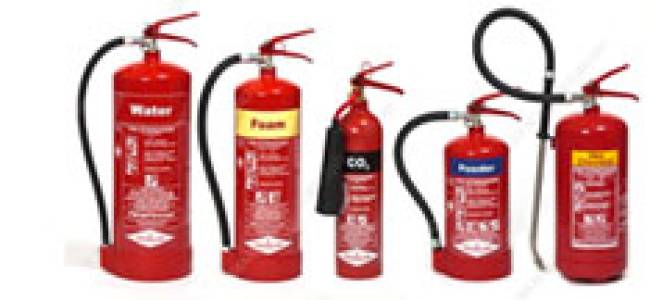Description
Fire extinguishers are critical safety devices, but their effectiveness depends heavily on choosing the right type for the specific fire. This guide breaks down the common classes of fire extinguishers, explaining their uses and limitations. Remember to always check local regulations and receive proper training before using any fire extinguisher.
Common Fire Extinguisher Classes & Their Applications:
Fire extinguishers are categorized by the type of fire they're designed to combat, represented by letters and numbers. Here's a breakdown:
1. Class A: Ordinary Combustibles
- What they extinguish: These extinguishers tackle fires involving ordinary combustible materials like wood, paper, cloth, rubber, and many plastics. They work by cooling the burning material.
- Agent used: Typically water, sometimes with added chemicals to improve performance.
- Symbol: A green triangle with the letter "A" inside.
- Limitations: Ineffective against flammable liquids, electrical fires, or grease fires. Water can spread fires involving certain flammable liquids.
2. Class B: Flammable Liquids
- What they extinguish: Designed for fires involving flammable liquids such as gasoline, oil, grease, paint, and solvents. They work by interrupting the combustion process.
- Agent used: Usually carbon dioxide (CO2), dry chemical (monoammonium phosphate or sodium bicarbonate), or foam.
- Symbol: A red square with the letter "B" inside.
- Limitations: Ineffective against Class A fires or electrical fires. Some agents can be damaging to sensitive electronic equipment.
3. Class C: Energized Electrical Equipment
- What they extinguish: Specifically for fires involving energized electrical equipment like wiring, appliances, and electrical panels.
- Agent used: Carbon dioxide (CO2) or dry chemical are commonly used as they are non-conductive.
- Symbol: A blue circle with the letter "C" inside.
- Limitations: Ineffective against Class A or Class B fires. Always de-energize the equipment if possible before attempting to extinguish the fire.
4. Class D: Combustible Metals
- What they extinguish: These fires involve combustible metals like magnesium, titanium, sodium, and potassium. They require specialized extinguishing agents to prevent reignition.
- Agent used: Special dry powders designed for metal fires. These are usually different depending on the specific metal involved.
- Symbol: A yellow star with the letter "D" inside.
- Limitations: Highly specialized and not commonly found in general-purpose fire extinguisher kits.
5. Class K: Cooking Oils and Greases
- What they extinguish: Specifically designed for fires involving cooking oils and greases in commercial kitchens. They suppress the fire and prevent reignition.
- Agent used: Wet chemical agents that saponify (convert into soap) the burning oil, preventing reignition.
- Symbol: A black hexagon with the letter "K" inside.
- Limitations: Not effective on other types of fires.
Multi-Purpose Fire Extinguishers:
Many extinguishers are multi-purpose, meaning they can handle more than one class of fire. For example, a common type is ABC, which effectively tackles Class A, B, and C fires. However, it's important to note that even multi-purpose extinguishers may have limitations depending on the size and nature of the fire.
